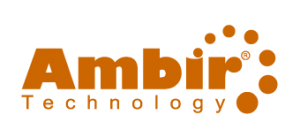Use of EHRs in Healthcare Still Small, but Benefits are Big
Despite the benefits of electronic healthcare records (EHRs), many facilities aren’t incorporating them into their establishment’s procedures. This is leading to medical facilities being much less efficient than they could be. The popularity of electronic healthcare records isn’t as popular as one may expect. Less than one-quarter of medical establishments utilize this technology. It assumed that the cost of converting records to electronic deters, and sometimes prevents, facilities from converting. However, once switched to electronic record keeping, it saves facilities money and has numerous other benefits.
1. Reduced Amount of Medical Errors
EHRs reduce the number of medical errors. They have the ability to store a high quantity of information and are easy to read. They force the person to switch to the another page of information with each patient, which prevents some errors. The overabundance of writing with traditional records leads to people getting sloppy with their handwriting. People end up just getting guessing what orders say, which leads to medical errors. Sometimes, people just don’t write neatly, and the same problem occurs. Spelling errors, abbreviations and difficult-to-read writing be confusing and cause errors with medications and dosages. This leads to medical errors. Having to call the doctor or track down another staff member is time-consuming. All of these scenarios are prevented with electronic record keeping.
2. Saves Money
The paper and several other aspects of the administrative duties cost a significant amount of money for people to sign documents in a traditional manner. And it’s forever costing the facility since supplies must be reordered on a regular basis, usually monthly for many facilities and products. It’s much cheaper to use EHRs regularly.
3. Less Time Consuming
It’s much less time consuming to type and scan, then it is to write. Plus, not having to track down people to figure out information saves time, so employees have more time with patients and other responsibilities. Employees have the ability to be much more efficient.
4. Less Storage Issues
All the paper files start to accumulate. Because issues may occur far in the future, facilities must keep records for many, many years. All of the files and documents take up space. The facility might not have the space to store it all and, therefore, requires a storage facility or an entirely separate building. This leads to a person needing to travel to the storage area to get the necessary files. Oftentimes, they hire a company to retrieve the files. This is an extra expense that’s costly, especially if the records need to be retrieved on a rush delivery. If the records remain on-site, it takes away space that can be used for a different purpose.
EHRs store a large quantity of information about the patient for diagnosing and providing treatment. It makes it easy to access and input information, even during admissions and discharges. The process saves money and prevents medical errors. They can be accessed from various locations, even at the same time. Turning to EHRs has many perks for a facility and not just for having less of an environmental impact.
5. Integrate with nForm and Go Paperless
Simply put, Ambir’s nForm converts any paper form into an electronic form.
It uses forms or documents generated by your application, or existing forms in PDF, Microsoft Word, JPG, TIF, BMP, PNG formats. There is no need to convert, modify or redesign these forms. Forms are sent to nForm 410x, Android or iOS tablets using a virtual print driver. Any application that can print a form or document, can easily send the form or document to nForm. Forms can also be sent to tablets directly from the 410x user interface.
Completed forms are input to the patient registration system, EHR or document management system using a TWAIN interface just like a document scanner, eliminating the need for complicated integrations. Completed forms can also be automatically saved as: PDF, JPG, TIF or BMP by nForm. If the document management or EHR system supports printing and TWAIN scanners or automatic import from a watched folder, it supports nForm.




Leave a Reply
Want to join the discussion?Feel free to contribute!